| DESCRIPTION | HISTORY |
Please Click On Any Picture for a Larger Version
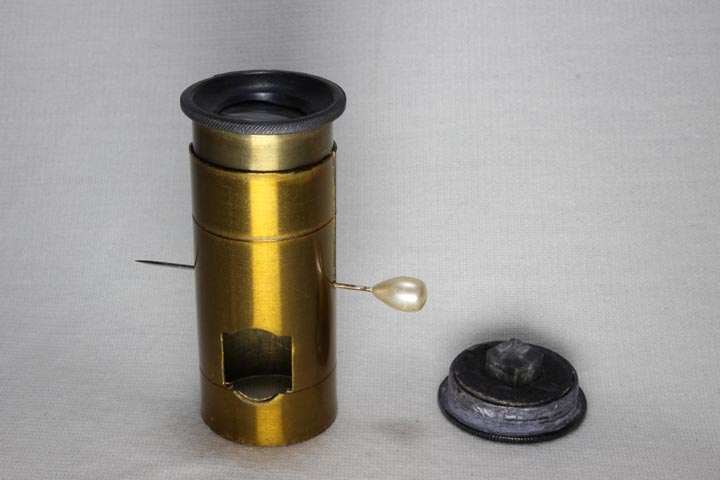
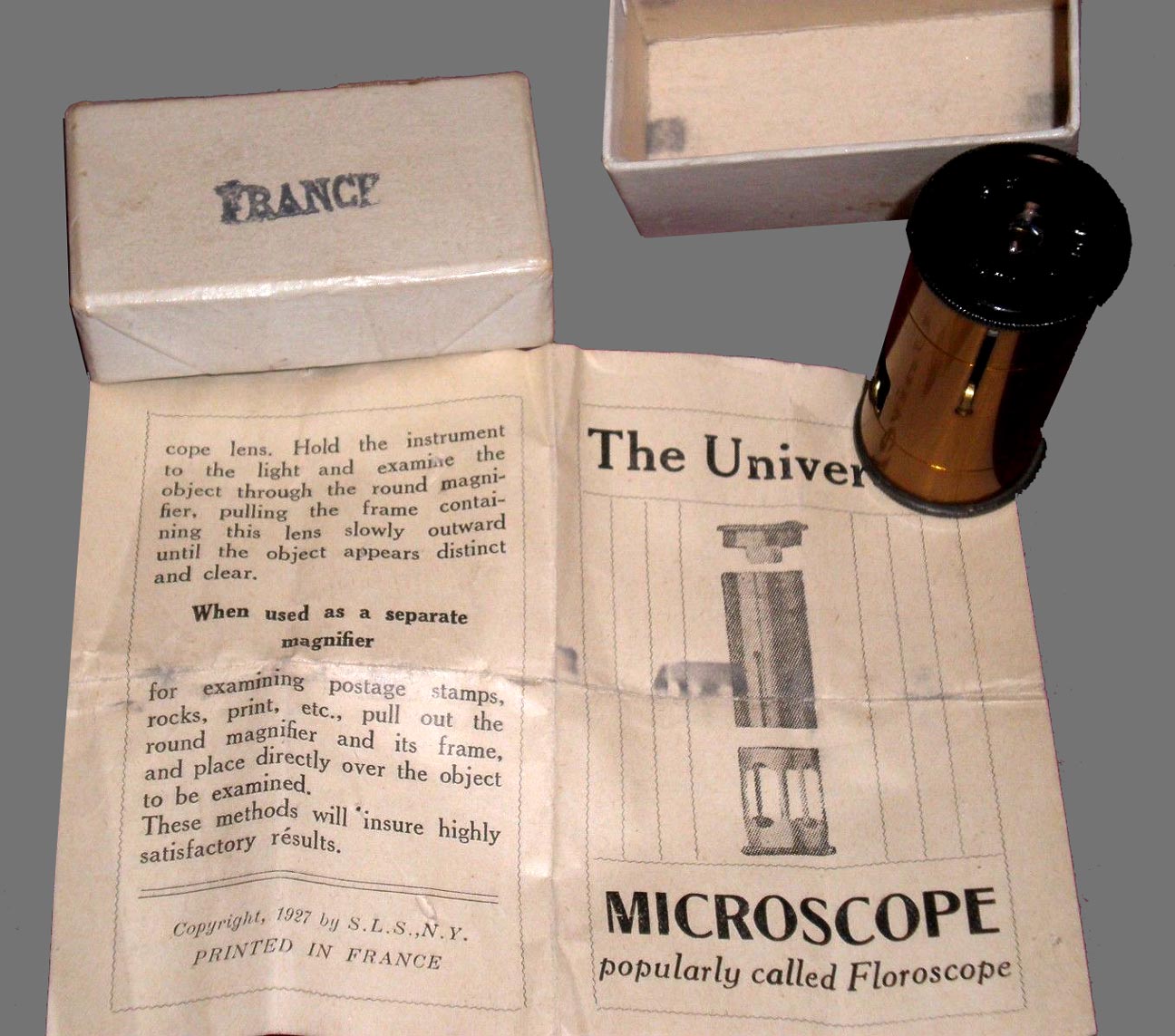
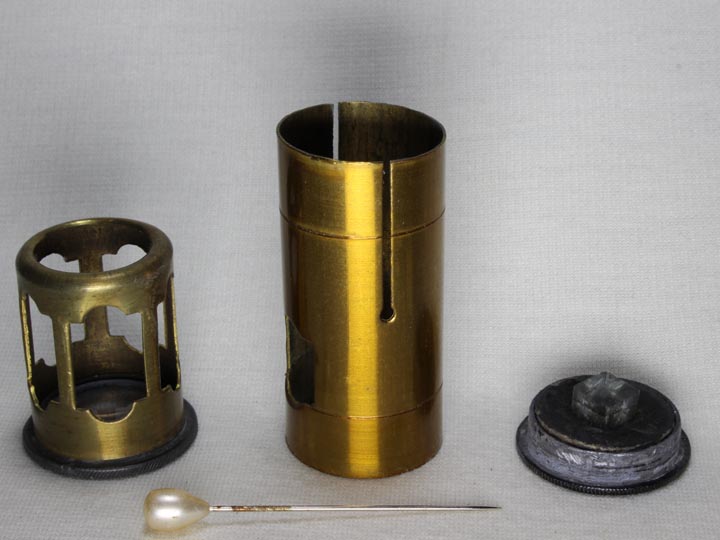
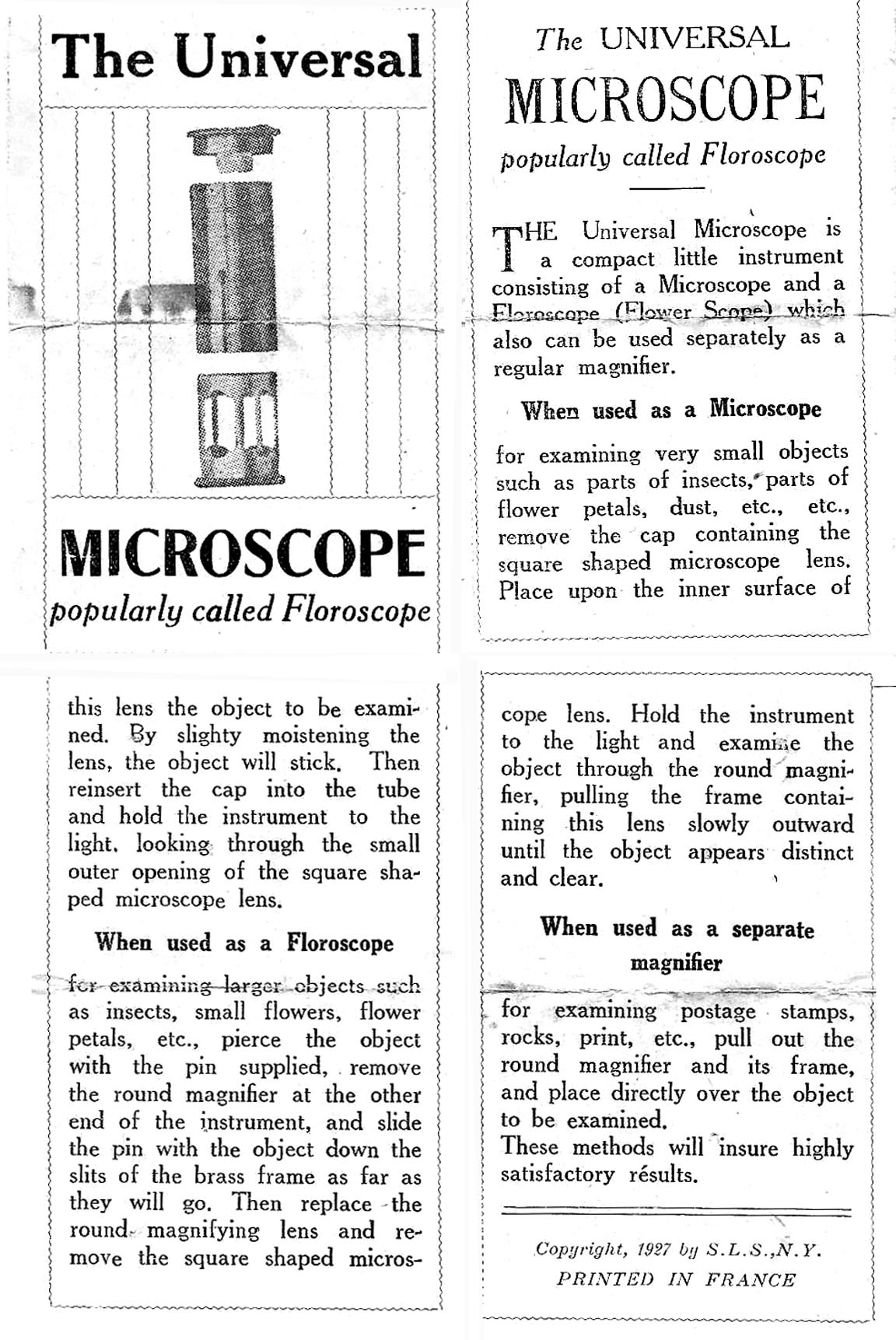 This instrument is made of thin lacquered brass and measures XX mm in length and about 24 mm diameter at the barrel. The optical ends are XX and XX mm in diameter. One end is simple loupe type magnifier, while the other end houses a rectangular Stanhope type of lens. The latter is the higher power lens. There is a slit in the tube to accomodate an 'insect holder' (a hat pin!). Unlike the original design, this example has a cutout to allow the user to insert a vial containing a liquid medium or allow some side lighting. This facility will only work with the low power loupe-type lens, not the higher power Stanhope. The instructions which came with this instrument show an image of the original version, rather than this slightly improved version; also note the copyright date, proving that these were made right into the second quarter of the twentieth century. For a larger image of the instructions, please click on the image.
This instrument is made of thin lacquered brass and measures XX mm in length and about 24 mm diameter at the barrel. The optical ends are XX and XX mm in diameter. One end is simple loupe type magnifier, while the other end houses a rectangular Stanhope type of lens. The latter is the higher power lens. There is a slit in the tube to accomodate an 'insect holder' (a hat pin!). Unlike the original design, this example has a cutout to allow the user to insert a vial containing a liquid medium or allow some side lighting. This facility will only work with the low power loupe-type lens, not the higher power Stanhope. The instructions which came with this instrument show an image of the original version, rather than this slightly improved version; also note the copyright date, proving that these were made right into the second quarter of the twentieth century. For a larger image of the instructions, please click on the image.
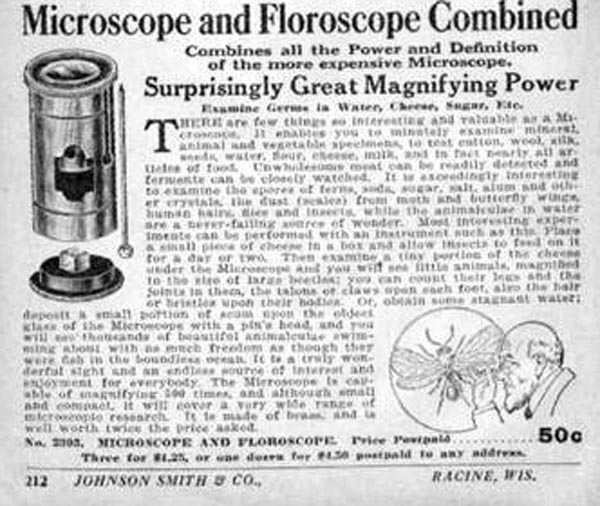 This little combination magnifier is a variation of a type that may be the most common antique microscope ever available. It also may have the most alternative names! In its most
basic form,, it had only a slit on the side to accomodate the pin. This is a slightly more useful design included a larger opening that could accomodate a small vial for liquid-containing specimens and also allow some side lighting for opaque objects. Later, a swivelling mirror and a horizontal slot for small slides was provided in another model. The original form of this type of microscoe was apparently offered in French advertisments as early as 1851, and in English ads as early as 1885, but was featured in the Pan American Exposition, a Worlds Fair of 1901. The catalog offering shown to the left is from 1929. This instrument and its variations continued to be sold through at least most of the second quarter of the twentieth century. Many merchants sold this either via their catalogs, at exhibitions (fairs), or via mail through magazine advertisements. This non-achromatic magnifier of cheap constuction, should not be confused with the superficially similar, but much higher quality simple microscopes of the period such as the Waechter Achromatic Universal Microscope. Nevertheless, it works surprisingly well considering its low price. This example can be dated to the second quarter of the twentieth century by the copyright date on the instruction sheet.
This little combination magnifier is a variation of a type that may be the most common antique microscope ever available. It also may have the most alternative names! In its most
basic form,, it had only a slit on the side to accomodate the pin. This is a slightly more useful design included a larger opening that could accomodate a small vial for liquid-containing specimens and also allow some side lighting for opaque objects. Later, a swivelling mirror and a horizontal slot for small slides was provided in another model. The original form of this type of microscoe was apparently offered in French advertisments as early as 1851, and in English ads as early as 1885, but was featured in the Pan American Exposition, a Worlds Fair of 1901. The catalog offering shown to the left is from 1929. This instrument and its variations continued to be sold through at least most of the second quarter of the twentieth century. Many merchants sold this either via their catalogs, at exhibitions (fairs), or via mail through magazine advertisements. This non-achromatic magnifier of cheap constuction, should not be confused with the superficially similar, but much higher quality simple microscopes of the period such as the Waechter Achromatic Universal Microscope. Nevertheless, it works surprisingly well considering its low price. This example can be dated to the second quarter of the twentieth century by the copyright date on the instruction sheet.